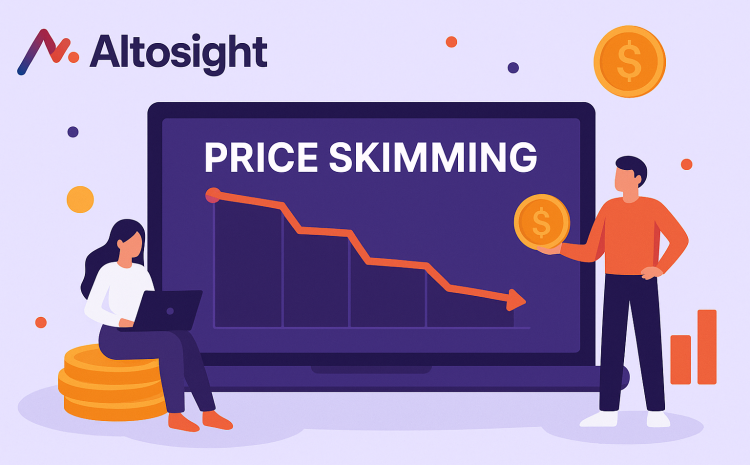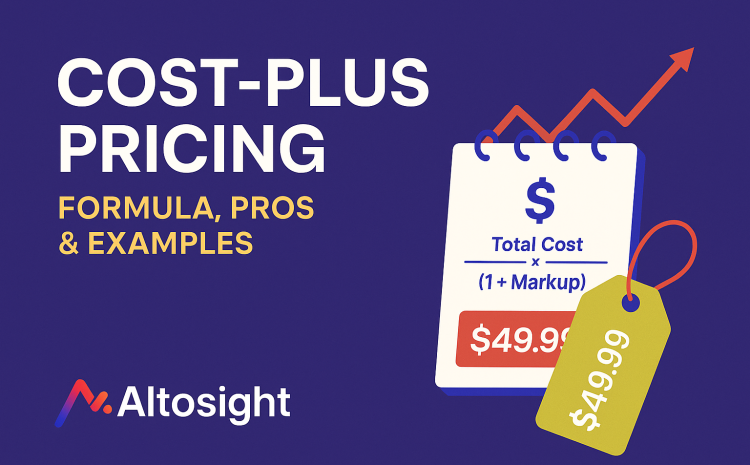
Minimum Advertised Price (MAP) and Manufacturer’s Suggested Retail Price (MSRP) are 2 terms that look very similar at first glance, but in the end, they are used very differently.
First of all, as noted in our MAP Pricing article, let me be clear that there is a lot of misinformation online about minimum advertised price policies and if not used correctly they could lead to price-fixing which is against the law, so make sure to first consult your lawyers before forming and enforcing your map policy.
I’d also like to point out that MAP applies in the US and it’s against the EU laws, so it doesn’t apply in Europe.
However, the Manufacturer’s Suggested Retail Price (MSRP) applies in Europe, but it’s usually called Recommended Retail Price (RRP).
Now, let’s see in more detail what MAP and MSRP (or RRP) are and how they differ.
What Is A Minimum Advertised Price (MAP) Policy
Many brands in the US employ a Minimum Advertised Price policy to avoid having their products being advertised below a certain price.
In simple words, they do that by forming a map policy where they explain that each of their products is map protected, shouldn’t be advertised below its map price, examples and in general how it works.
Then they have their Minimum Advertised Prices monitored either with a software tool or manually.
The important part is that MAP policies must be one-way policies, which means it’s something that the manufacturer says to its retailers and it suggests they comply.
In turn, the manufacturer will reward their compliance and there are many ways to do it, from reduced wholesale prices to co-op advertising funds, special promos, etc.
However, it’s crucial that the retailers can violate these map prices if they desire to do so, which of course might lead to consequences from the manufacturer.
The consequences can’t be legal, but they might include a 30-day timeout (not selling products to this vendor for 30 days), exclusion from special promo actions, even the termination of their partnership.
Under no circumstances should the manufacturer add in their contract with their vendors the MAP prices of their products and the minimum price they should be sold. This is the essence of vertical price-fixing.
Vertical price-fixing is when a manufacturer and their retailers agree to sell a product at a certain price, or at a certain minimum price.
Minimum Advertised Price policies are not agreements, but rather… policies that suggest to the vendors at what price to advertise the manufacturer’s products and if they violate it, there can be no legal repercussions.
You can learn about MAP pricing in much more detail in our article on MAP pricing meaning.
What Is Manufacturer’s Suggested Retail Price (MSRP pricing) or Recommended Retail Price (RRP)?
The definition of Manufacturer’s Suggested Retail Price (MSRP) or Recommended Retail Price (RRP) as it’s most commonly found in Europe, or list price or sticker price is what the manufacturer believes their product should be sold for.
But this doesn’t tell us much about its use cases and the differences between MSRP and MAP right?
Although both MAP and MSRP aim to influence the price, their uses and goals are different.
MAP aims to put a limit on the price a product is advertised for. This can also include the price listed on ecommerce stores though.
Its aim is to maintain the brand’s image by avoiding its products being advertised for a very low price, but also maintain healthy competition between retailers by pushing them to compete on aspects like customer support, product variety and shipping costs and times.
How Does MSRP or RRP Work?
Manufacturer’s Suggested Retail Price (MSRP) or Recommended Retail Price (RRP) aims to establish a fair retail price which helps:
- The manufacturer to calculate their wholesale price and the retailer’s profit margin. A very rough process would be by calculating the costs of the product, adding 100% markup which then becomes the MSRP and then makes the wholesale price 25% cheaper than MSRP and the rest is left for the retailers’ profit. For example, a product that costs $10 to manufacture, it will have an MSRP of $20, it will sell at wholesale for $15 and the retailers will be able to profit anywhere from $0.01 to $5.
- The retailers to calculate how much their profit margins could be on this product ($0.01 to $5 in the example above) so they can decide if the potential profit is enough to invest their money in that product.
- The consumers who might not know how much a product should be sold for and MSRP helps establish a price ceiling which is rarely mentioned!
The 3rd point above is a huge distinction that’s rarely mentioned. MSRP or Recommended Retail Price (RRP) is often public for consumers to see, whereas MAP is usually private between the manufacturer and their retailers.
For example, if a pack of gum has an MSRP of $1 on its packet and the vendor wants to sell it to you for $1.20 it will rarely be sold. You might also think that the vendor wants to rip off you.
So, the Manufacturer’s Suggested Retail Price is not only used by the retailers to work out their estimated profit margin and from the manufacturers to calculate a fair wholesale price, but also from the consumers to know the fair price of a product.
MSRP vs Dealer Price
MSRP is most commonly used among car dealerships and less often among other products. MSRP is different than dealer price as you might already know.
Although MSRP and Dealer Price are most commonly met in car dealerships, they are not the only places to be found.
The difference between the two is that the Manufacturer’s Suggested Retail Price (MSRP) is usually the ceiling price of the cars or other products and the Dealer Price is the price given by that specific dealer which is lower and depends on how much the dealer is willing to minimize their profit margins.
Of course, the Dealer Price is always lower than the Manufacturer’s Suggested Retail Price (MSRP) and that’s expected.
Why Do Vendors Encourage Retailers To Sell At MSRP?
Generally, vendors (or manufacturers) encourage retailers to sell at MSRP in order to avoid a price war between themselves, while keeping a healthy margin for themselves.
Also, the manufacturer has done the pricing work for them and calculated a fair price, their margin and everything else for them, so they should adhere to it.
However, in real market conditions, things are not as smooth as they should be. Most retailers will almost always sell below the MSRP to make the customer feel they got a bargain.
Especially now with the growth of Amazon and the rise of small independent Amazon sellers who don’t want or care to adhere to MSRP or other price limitations, it’s becoming very hard to maintain the Manufacturer’s Suggested Retail Price (MSRP).
Conclusion
To summarize, although Minimum Advertised Price (MAP) and Manufacturer’s Suggested Retail Price (MSRP) or Recommended Retail Price (RRP) look like the same at first glance, they have different uses, with the most notable one being that MAP is private between the manufacturer and the retailer and MSRP or RRP being public to the consumer too.
Also, MAP is a policy used by manufacturers most commonly in the US to provide healthy competition, while avoiding price wars among retailers as well as preserve their brand image, whereas MSRP or RRP is most commonly used to calculate profits, wholesale prices and educate the customers what a fair price for each product should be.
For any questions or additional insights, please leave them in the comments below and we will answer there.






2 Comments
I am a wholesaler trying to make sense of the MAP, its meaning and goal. I think you have dealt nicely with the subject. Thanks Evans
Thank you for your comment and nice words Evans, glad to help.
If you have any questions come up, happy to answer them!
Comments are closed.